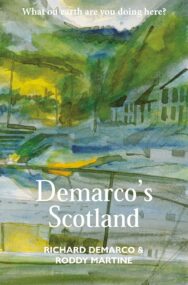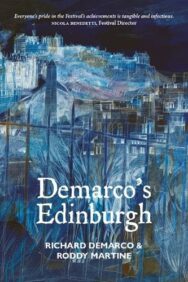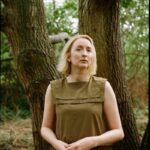‘We are all explorers. For the lucky ones, there is nowhere else in this universe where such a diversity of riches and folklore is so readily embraced than on the roadsides and hinterland of Scotland, signposted without prejudice for all to discover.’
Legendary arts impresario Richard Demarco brings us his memories, thoughts and hopes for art in Scotland as well as a wonderfully idiosyncratic history of our landscape, mythology and culture.
DeMarco’s Scotland
By Richard DeMarco and Roddy Martine
Published by Luath Press
What am I doing here?
So, once and for all, what exactly is this Road to Meikle Seggie that so often features in the extraordinary life of Richard Demarco?
In his book A Life in Pictures (An Artwork Special from Northern Books 1995), Richard explains. The Road to Meikle Seggie does not lead to a town, village or hamlet but only to a farmyard of that name in Kinross on the Ledlanet estate of the late John Calder. It marks the site of an ancient settlement now considered too unimportant by map-makers to notice, and beyond that inconspicuous farmyard it leads to everything that exists in Scotland and beyond:
The Road to Meikle Seggie should not be limited to this age. It does not fulfil the usual requirements of a modern road… It is a road at one with nature. It follows the lie of the land – rising, falling, turning and twisting, like a living thing. It does not detract in any way from the untouched landscape of rolling hills.
The Road to Meikle Seggie is the gateway to the Scotland that eludes most Sassenachs (and surely that includes most tourists). It will take you through the valley between the Cleish and Lomond Hills where you will first glimpse the Ochil Hills as the introduction to the wild, unspoiled, unchanging mountainous land where the elemental forces are forever in control.
The great abbeys, country houses and landed estates of Scotland with their tenanted farms, crofting communities and traditions are all part of The Road to Meikle Seggie – a lost village where once 200 people lived on the great publisher John Calder’s Ledlanet family estate, gainfully employed in the Calder brewery producing Calder Ale. It was therefore considered important in the world of the Demarco Gallery for it to become Scotland’s equivalent of Black Mountain College which was essentially a cattle ranch in the Black Mountains of North Carolina, the American version of The Bauhaus.
The Meikle Seggie that once featured on a Kinross signpost is of equal symbolic importance to that of Stirling, Cupar and St Andrews. Alongside the lost villages of Scotland is the lost history of their inhabitants, many of whom are our ancestors.
Scotland is therefore NOT all about the tourist destinations of Edinburgh, Glasgow, the Trossachs, Aberdeen, Inverness and the Highlands and Islands. It is so much bigger than that. This book is the profound expression of the deeply held and timeless love affair of two passionate European Scots for a so often misunderstood global Caledonian utopia.
It is a celebration of what the Scots-born composer Hamish MacCunn called The Land of the Mountain and the Flood, its impact upon the world and the opportunities it has over the centuries provided for artistic endeavour throughout the world. ‘What am I doing here?’ is the everlasting cri de coeur, alongside ‘How lucky am I to be here!’
Journeys and explorations
All of our lives involve journeys of one sort or another; a voyage through time, emotion and landscape. A voyage of discovery. A voyage of introspection. A voyage of failure. A voyage of achievement.
We are all explorers. For the lucky ones, there is nowhere else in this universe where such a diversity of riches and folklore is so readily embraced than on the roadsides and hinterland of Scotland, signposted without prejudice for all to discover.
On The Road to Meikle Seggie are a series of landmarks leading from the mists of an all too evasive continental pre-history into the remnants of a glorious, often violent inheritance, onwards towards an uncertain future where Scotland’s creative brilliance, past and present, are the only certainties.
Everything is made possible on The Road to Meikle Seggie. It leads not only from the Edinburgh Festivals of the 1960s and 1970s. It leads to the farmscapes of Mellerstain House, Johnny Watson’s East Lothian Skateraw Farm and to certain ‘gardenscapes’, in particular, Ian Hamilton Finlay’s Stonypath Farm in Lanarkshire and the farmscapes of Dumfries and Galloway painted by Archie Sutter Watt, as well as the botanic gardens of Edinburgh and Benmore. It leads to the Border abbeys of Melrose, Dryburgh, Kelso, Pluscarden and Nunraw; to the prehistoric sites of Callanish, the Ring of Brodgar, Maeshowe, Cairnpapple, Kilmartin Valley; the estates and libraries of Falkland Palace, Traquair House; the houses and studios of Margot Sandeman on the Isle of Arran, Edna Whyte on the island of Luing; the farmscape of Dalmeny House; the Roman sites at Trimontium, Cramond, the Antonine Wall at Falkirk; the farmscapes abutting the Crinan Canal and the houses and estates of Marion Campbell of Kilberry in Knapdale and on the Isle of Harris where, in her early teens, she constructed her own loom to weave outstanding examples of Harris Tweed well into her 80s.
The point of writing all of this down is that there are countless alternative sources of material to be studied and utilised within the histories of those given the task of ‘stewardship’; that is the caring for historic places identified within the history of Scotland from prehistoric times to the present day.
And to underline how the history of the Edinburgh Festival must be re-rooted in that of the whole of Scotland is because the Edinburgh Festival was a direct response to the global sufferings of Europe caused by the Second World War.
How many of us are aware that the second language of Scotland is Polish? If you study the physical fabric of the interiors of Dalkeith Palace or Falkland Palace, or Menzies Castle in Perthshire, or Black Barony Castle near Peebles, you will find evidence that the Polish Army left behind an indelible mark.
Forty thousand Scots found gainful employment as long ago as the 15th century in Poland, and many Polish place and family names have their origins in the language of the Scots. The Demarco Gallery, founded in the 1960s, was totally reliant upon artists from that country to reveal how the cultural integrity of Scotland is deeply wedded into that of Poland, and to its adjoining countries such as Belarus, Lithuania and Moldova.
At the same time, The Road to Meikle Seggie, which most probably had its origins as a drovers’ road, is also a pilgrimage road, connecting the Isle of Iona and the Orcadian cathedral of St Magnus and the Outer Hebridean medieval church dedicated to St Clemens. For over a thousand years it has never been possible to separate those drovers’ roads and the Celtic pilgrimage routes from the coastlines of Dumfries and Galloway and Kintyre, and County Down and County Antrim in Ireland.
Within the pages of this book are to be found the nodal points that inspired the EDINBURGH ARTS programmes from the 1970s onwards in close collaboration with Edinburgh University’s School of Scottish Studies, under the direction of Professor John MacQueen, as well as the School of Extra-Mural Studies piloted by Dr Basil Skinner, co-founder of the Hopetoun Trust.
DeMarco’s Scotland by Richard DeMarco and Roddy Martine is published by Luath Press, priced £14.99.
ALSO IN THIS ISSUE
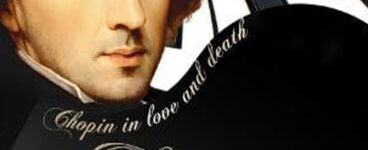
 Nocturne by Christopher Rush
Nocturne by Christopher Rush
‘It was no lie. We were all sorry. The whole world had lost him. And the whole world had come to mou …
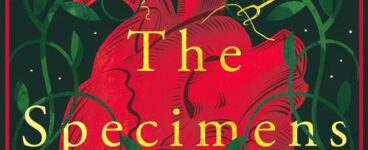
 The Specimens by Mairi Kidd
The Specimens by Mairi Kidd
‘We took his body out the coffin,’ William said, all in a rush. ‘Myself and Hare.’





